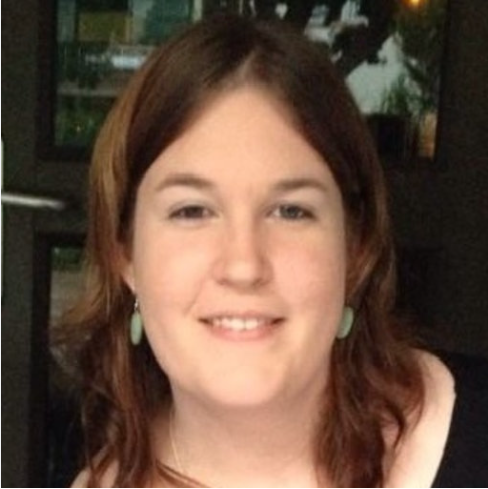
A South African medical researcher’s findings are used in the World Health Organisation’s (WHO) course training material and have been integrated into global laboratory performance and quality assessments. Dr Brigitta Derendinger’s study examined ways in which existing tests to diagnose DR-TB, e.g. bedaquiline treatment, could be improved and shortened.
DR-TB a Serious Health Threat
Drug-resistant tuberculosis (DR-TB) poses a serious health threat across the globe and contributes to increased mortality rates and risk of transmission due to the high cost of treatment. According to 2021 statistics, there were about 450 cases of DR-TB across the world and 191 000 deaths. Comparatively, South Africa (SA) has one of the highest numbers of drug-resistant patients across the world. However, only 50% of these patients are on treatment.
Dr Derendinger, who has just obtained her doctorate, is attached to the clinical mycobacteriology and epidemiology (CLIME) group at Stellenbosch University (SU)’s Faculty of Medicine and Health Science. She maintains that DR-TB threatens to derail the WHO’s strategy of eradicating the disease globally by 2035. “We therefore need new and improved methods for diagnosing DR-TB in the shortest possible time to curb transmission, improve treatment and save lives,” she said.
Bedaquiline resistance emergence in non-clinical trial patients
She also characterised the programmatic emergence in non-clinical trial patients to Bedaquiline resistance, (the first new TB drug in almost 40 years), in high-risk patients. Bedaquiline is part of injectable-free treatment regimens for DR-TB. In her findings, she highlighted the long time the diagnostic process takes despite the fact that from the initial diagnosis of DT-TB to when patients starts receiving treatment, has shortened.
Dr Derendinger said the Xpert MTB and RIF Ultra are some of the most widely used tests for the diagnosis of TB and drug resistance. However, a second sputum test is still necessary to verify resistance to Rifampicin, frequently prescribed to treat TB and to diagnose second-line resistance. In addition, two WHO-endorsed molecular tests (MTBDRplus and MTBDRsl) are routinely performed to confirm a drug-resistant diagnosis and to further diagnose resistance to other drugs. “Since the roll-out of Xpert, Ultra and MTBDRplus in SA, the time from the initial diagnosis of multi-drug-resistant TB to when the patient starts receiving treatment has shortened, but the process is still long,” she said.
Lack of Biosafety and Infrastructure for DNA Extraction
In addition, Dr Derendinger said that many countries with a high TB burden lack the biosafety and infrastructure for the extraction of DNA and additional molecular testing and that there is an urgent need to reduce these diagnostic delays and develop or improve rapid molecular methods to help minimise the reliance on the collection of a second sputum sample”. In addressing the shortcomings, Dr Derendinger extracted DNA of Mycobacterium tuberculosis from used Xpert cartridges that would otherwise be discarded by laboratories. She showed how by doing this first (MTBDRplus) and second-line (MTBDRsl) TB drug testing collected from this one cartridge, it allowed for a quicker diagnosis of DR-TB and removed the need to collect a second specimen.
Profound Benefits of the Study
“We have identified ways to reduce the need for collection of a second sputum sample, thereby potentially reducing the time it takes to make a diagnosis from weeks to a few days. A quicker diagnosis will mean that patients can be placed on treatment sooner,” said Dr Derendinger. In addition, she said, they have identified thresholds to implementation to ensure that no test needs to be wasted on CE-marked options, likely to give an invalid result. She said this has profound implications, especially in countries such as SA where patients often do not return to give a second sputum sample or simply cannot produce one to confirm the diagnosis of drug-resistant TB.
Diagnostic Delays
Of Bedaquiline, Dr Derendinger said: “The WHO recommends TB drug testing to be done on all patients receiving Bedaquiline to monitor treatment. This is not done regularly in SA and only a few centralised laboratories have the capacity to do so, causing diagnostic delays. Clinical Bedaquiline resistance is emerging but data is scarce, especially in settings where patients are more likely to experience delays and drug shortages, receive less support and are monitored even less than patients on clinical trials.”
In the end, these patients can be non-adherent and failing treatment regimens which are less likely to be detected, therefore resistance is more likely to be acquired and later transmitted in these settings, said Dr Derendinger. She emphasised the need to optimise established molecular drug-resistant TB tests and development of new drug-resistant ones to monitor resistance to new drugs such as Bedaquiline to curb delayed diagnosis and ongoing transmission.





